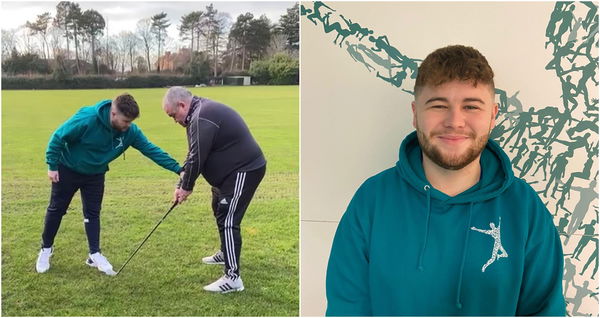Physio walks us through how to prevent back pain and improve your swing
This physio gives five key steps to avoiding back pain that will in turn benefit your swing.

Golf is a game of muscle memory and its repetitive motions can lead to inflammation and strains which may even affect the discs of the spine, causing pain and impacting your swing.
Urban Body golf therapist, Tom Gallagher, says the start of the golf season usually means more patients with golf related injuries visiting him.
Most of the injuries sustained by golfers are caused by the strain on the body during the swing.
An underlying fault in a swing can cause a multitude of stress-related injuries, from the wrist to the spine.
During the golf swing, there are a number of movement forces running through the lumbar spine (lower back).
These forces, in combination with poor posture, weak core muscles and other existing injuries, can cause damage to the lumbar spine and surrounding muscles.
This often results in pain and weakness through the back area, inability to perform a good swing, problems bending down to pick up the ball and the potential to make completing 18-holes a gruelling experience.
Here are five tips on how to stay pain free, potentially increasing how well and far you can hit the ball:
Strengthen your core
Core strength is huge for spine health. The muscles around the abdomen and back help support the spine, and having a strong core reduces the risk of injury as you swing and bend.
Be sure to exercise and strengthen your hips, glutes, lats, and obliques, not just the abs. Pilates is extremely helpful because it focuses on both flexibility and full body strength, which helps balance out your joints.
Warm up before you tee off
Studies have shown that golfers who have stiffer back rotation and less joint range of motion have more back pain. Before you practice your swing or play a round of golf, warm up for at least 10 minutes. We recommend the following:
-Over the head shoulder stretch
-Chest opener with forward bend stretch
-Standing quad stretch
-Low-lunge hip flexor stretch
-Standing IT band stretch
Maintain neutral spine positioning
When standing over the ball before swinging, keep your spine in its relaxed position of comfort and bend with your hips and knees rather than your back.
Relax into your swing
Don't try to hit the ball as hard as possible when you step up to the tee. Pushing yourself not only causes erratic ball placement but increases the chance of over-exerting your back and causing injury.
Take it easy and enjoy the social and exercise components of your sport.
Build up gradually
Golf requires serious stamina. If you're new to golf, don't start out by playing 36 holes on your first round. The majority of back injuries from swinging are due to overuse and lack of control.
This can lead to extreme soreness and cause you to injure yourself by overexerting too soon. Build up slowly and strengthen you back over a long period of time to prevent injury."
Certified by the Titleist Performance Institute (TPI), Urban Body's golf screening programme examines how movement restrictions are affecting your golf swing, focusing on mobility, stability, strength and flexibility in relation to striking a golf ball.
The physiotherapists create bespoke recommendations to improve any weaknesses, which will ultimately reduce the risk of injuries and potentially increase how far you’re hitting the ball.
Urban Body's physiotherapy and rehabilitation clinic is based at the West Warwickshire Sports Club in Olton, and the team has more than doubled since the beginning of the pandemic. Urban Body offers free assessments to new patients.
For more information please click here.
Next page: Outrage at UK golf club over harsh ruling
Sponsored Posts
Latest News
![Lexi Thompson [Instagram]](https://cdn.golfmagic.com/2025-04/le122.jpg?width=400)











